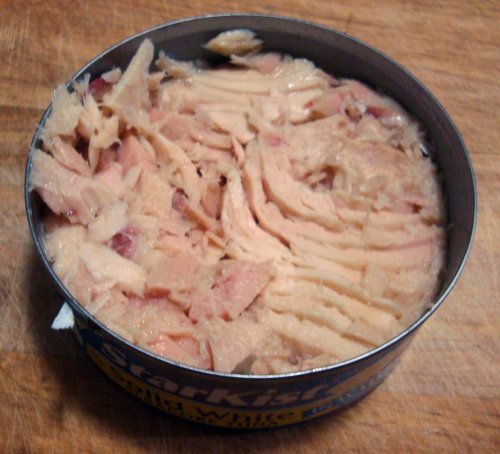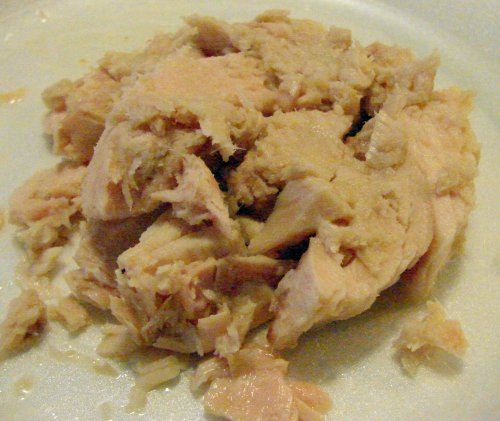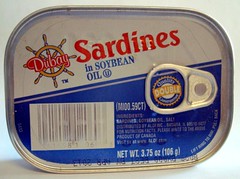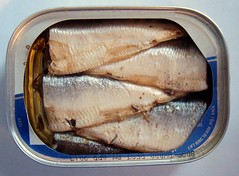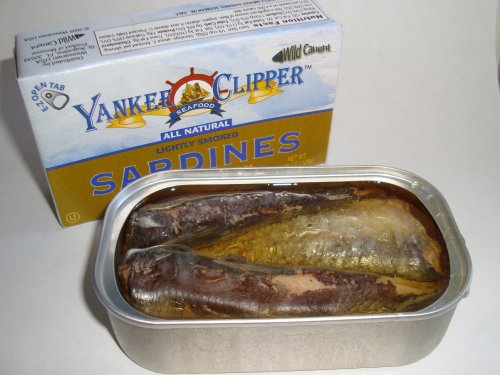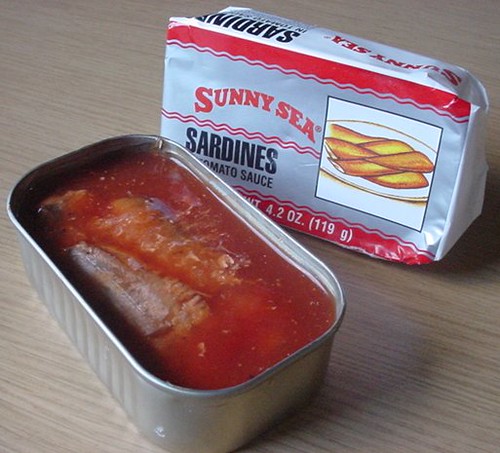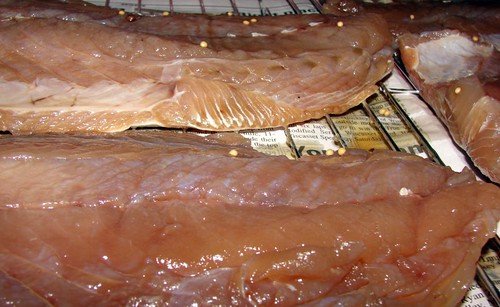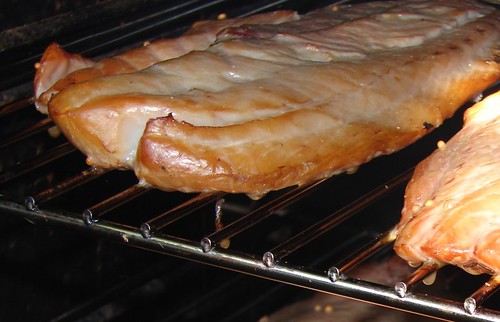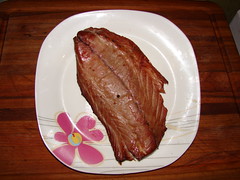I've liked sardines as long as I can remember, and even though they seem to have fallen out of favor in the past 20 years or so, I still enjoy them and seek them out. There's been a lot of buyouts and consolidations in the sardine business as the years have gone by - that, and the huge decline in the Atlantic herring population, has pretty much killed off the American sardine industry, with the last US cannery closing in 2010. These days, the sardines available in your local supermarkets come from Morocco, Poland, Norway, and - like these Brunswick flavored sardines - Canada.
These are not the million-or-so-sardines-to-a-can tiny fish most of us think of when we think of sardines, but average 3 to 5 largish fish per can. Although they're bigger, the fish are no less tender and delicious as the tiny ones. All three varieties had that in common.
Soybean Oil with Hot Peppers - Packed with slices of hot chili peppers which infused the fish and the oil with noticeable but mild spicy heat. I found the heat level to be rather mild; if you're not into chili spice, you may find it a little more kicky. Very good.
Tomato and Basil Sauce - Sardines have been packed in tomato sauce since forever. The difference here is the savoriness of the sauce. Instead of just some simple unadorned tomato sauce, Brunswick uses a sauce that's heavy on the basil and sprinkled with a few other Italian herbs as well. This results in a surprisingly good (albeit fishy) tomato sauce with a certain hearty character.
Mustard and Dill Sauce - The mustard is very mild - even milder than out-of-the-jar yellow mustard - and is loaded with dill. Too loaded for me, because dill is my least favorite of all herbs (I like it dill pickles and that's about where it stops.) Because I particularly loathe the flavor of fish with dill, I didn't like these at all. Do you like dill? Then you might like these.
.









